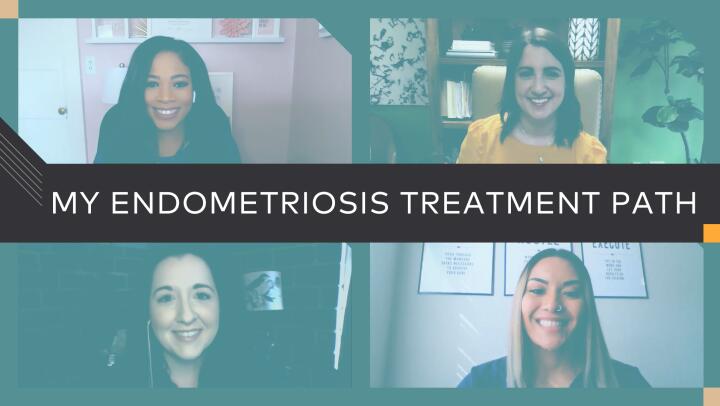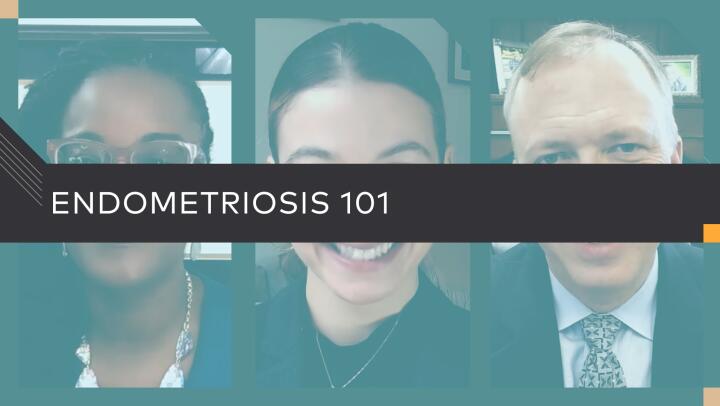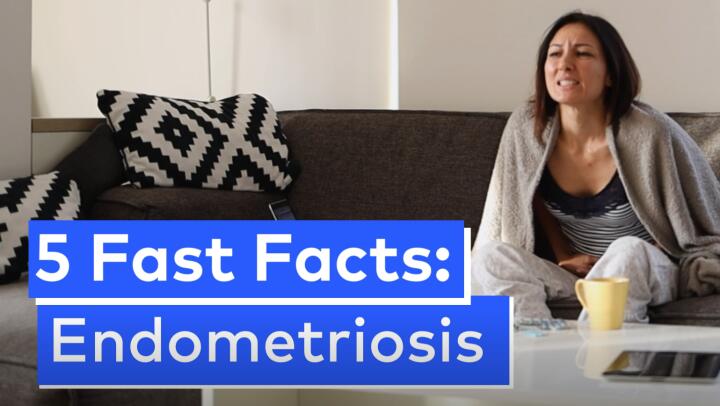8 Things to Know About Endometriosis

Medically Reviewed By William C. Lloyd III, MD, FACS
Written By Healthgrades Editorial Staff on November 8, 2020
-
 Endometriosis: What to Know About This Often Misunderstood ConditionMore than 5 million American women have endometriosis. It’s most common in women in their 30s and 40s, but any woman who has monthly periods can have it. Endometriosis often causes pelvic pain and cramps, especially during your period. The pain can range from mild to severe. Here are eight things to know about this common condition.
Endometriosis: What to Know About This Often Misunderstood ConditionMore than 5 million American women have endometriosis. It’s most common in women in their 30s and 40s, but any woman who has monthly periods can have it. Endometriosis often causes pelvic pain and cramps, especially during your period. The pain can range from mild to severe. Here are eight things to know about this common condition. -
 1. Endometriosis can occur in many areas.Endometriosis occurs when the tissue that lines the uterus grows in areas outside the uterus. It’s most common for the tissue to spread to the fallopian tubes, ovaries, outside surface of the uterus, and the pelvic cavity lining. It can also affect the bladder, bowel, cervix, rectum, vagina and vulva. In rare cases, endometriosis can spread to the brain, lungs or skin.
1. Endometriosis can occur in many areas.Endometriosis occurs when the tissue that lines the uterus grows in areas outside the uterus. It’s most common for the tissue to spread to the fallopian tubes, ovaries, outside surface of the uterus, and the pelvic cavity lining. It can also affect the bladder, bowel, cervix, rectum, vagina and vulva. In rare cases, endometriosis can spread to the brain, lungs or skin. -
-
 2. Symptoms are known to vary.Although the most common symptom is painful menstrual cramps, endometriosis can also cause painful sex and pain in the back and intestines. However, some women have no symptoms. Endometriosis can also make it harder to get pregnant. Other symptoms of endometriosis include:
2. Symptoms are known to vary.Although the most common symptom is painful menstrual cramps, endometriosis can also cause painful sex and pain in the back and intestines. However, some women have no symptoms. Endometriosis can also make it harder to get pregnant. Other symptoms of endometriosis include:
- Bloating
- Constipation
- Diarrhea
- Fatigue
- Heavy menstrual bleeding
- Nausea
- Painful bowel movements or urination
-
 3. Certain women may have a higher risk.Doctors don’t know exactly what causes endometriosis. But they do know some women may have a higher risk. You may be at higher risk if you have:
3. Certain women may have a higher risk.Doctors don’t know exactly what causes endometriosis. But they do know some women may have a higher risk. You may be at higher risk if you have:
- A close family member who has endometriosis
- A condition that prevents menstrual blood from flowing properly, such as structural abnormalities or scar tissue
- Had an infection in the pelvis
- Menstrual cycles that are less than 27 days
- Never had children
- Periods that last longer than seven days
-
 4. Estrogen levels may affect your risk.Since doctors still don’t know exactly what causes endometriosis, there is no surefire way to reduce your risk. But they do know the hormone estrogen plays a role in making the uterine lining thicker. You may be able to reduce your risk by keeping your estrogen levels low. You can do this by getting regular exercise, limiting caffeine and alcohol, and keeping your body fat low.
4. Estrogen levels may affect your risk.Since doctors still don’t know exactly what causes endometriosis, there is no surefire way to reduce your risk. But they do know the hormone estrogen plays a role in making the uterine lining thicker. You may be able to reduce your risk by keeping your estrogen levels low. You can do this by getting regular exercise, limiting caffeine and alcohol, and keeping your body fat low. -
 5. There’s only one way to diagnose endometriosis.If your doctor suspects you have endometriosis, he or she may do a pelvic exam or pelvic ultrasound to look for signs of this condition. But the only way to find out for certain is to undergo a laparoscopy. This is a surgical procedure to look inside your abdomen. To do this, your doctor will make a small cut in your skin and use thin tubes and a small camera to look for growths.
5. There’s only one way to diagnose endometriosis.If your doctor suspects you have endometriosis, he or she may do a pelvic exam or pelvic ultrasound to look for signs of this condition. But the only way to find out for certain is to undergo a laparoscopy. This is a surgical procedure to look inside your abdomen. To do this, your doctor will make a small cut in your skin and use thin tubes and a small camera to look for growths. -
-
 6. Endometriosis can be treated.There is no cure for endometriosis, but it can be treated. Treatments include over-the-counter pain relievers, hormone therapy, and surgery. In many cases, these treatments help control the symptoms and reduce pain. Since every woman is different, you should talk with your doctor about which treatment is right for you.
6. Endometriosis can be treated.There is no cure for endometriosis, but it can be treated. Treatments include over-the-counter pain relievers, hormone therapy, and surgery. In many cases, these treatments help control the symptoms and reduce pain. Since every woman is different, you should talk with your doctor about which treatment is right for you. -
 7. Endometriosis doesn't mean you can't get pregnant.Having endometriosis can make it harder to get pregnant. But that doesn’t mean you will never have children. It may take a longer time to get pregnant, or you may need surgery or fertility treatments. If you want to have a baby, talk with your doctor about ways to increase your chances. The good news is that endometriosis symptoms usually go away during pregnancy.
7. Endometriosis doesn't mean you can't get pregnant.Having endometriosis can make it harder to get pregnant. But that doesn’t mean you will never have children. It may take a longer time to get pregnant, or you may need surgery or fertility treatments. If you want to have a baby, talk with your doctor about ways to increase your chances. The good news is that endometriosis symptoms usually go away during pregnancy. -
 8. Endometriosis may be linked to other conditions.Experts have found that there may be a link between endometriosis and certain other conditions. If you have endometriosis, you or your family members may also have:
8. Endometriosis may be linked to other conditions.Experts have found that there may be a link between endometriosis and certain other conditions. If you have endometriosis, you or your family members may also have:
- A higher risk of infections
- Asthma, allergies, or chemical sensitivities
- Autoimmune conditions, such as multiple sclerosis or lupus
- Certain cancers, such as melanoma, non-Hodgkin lymphoma, or cancers of the breast, ovaries, kidneys, endocrine system, brain, thyroid, or colon
- Chronic fatigue syndrome or fibromyalgia
- Mitral valve prolapse—a problem with one of the heart’s valves
8 Things to Know About Endometriosis



























